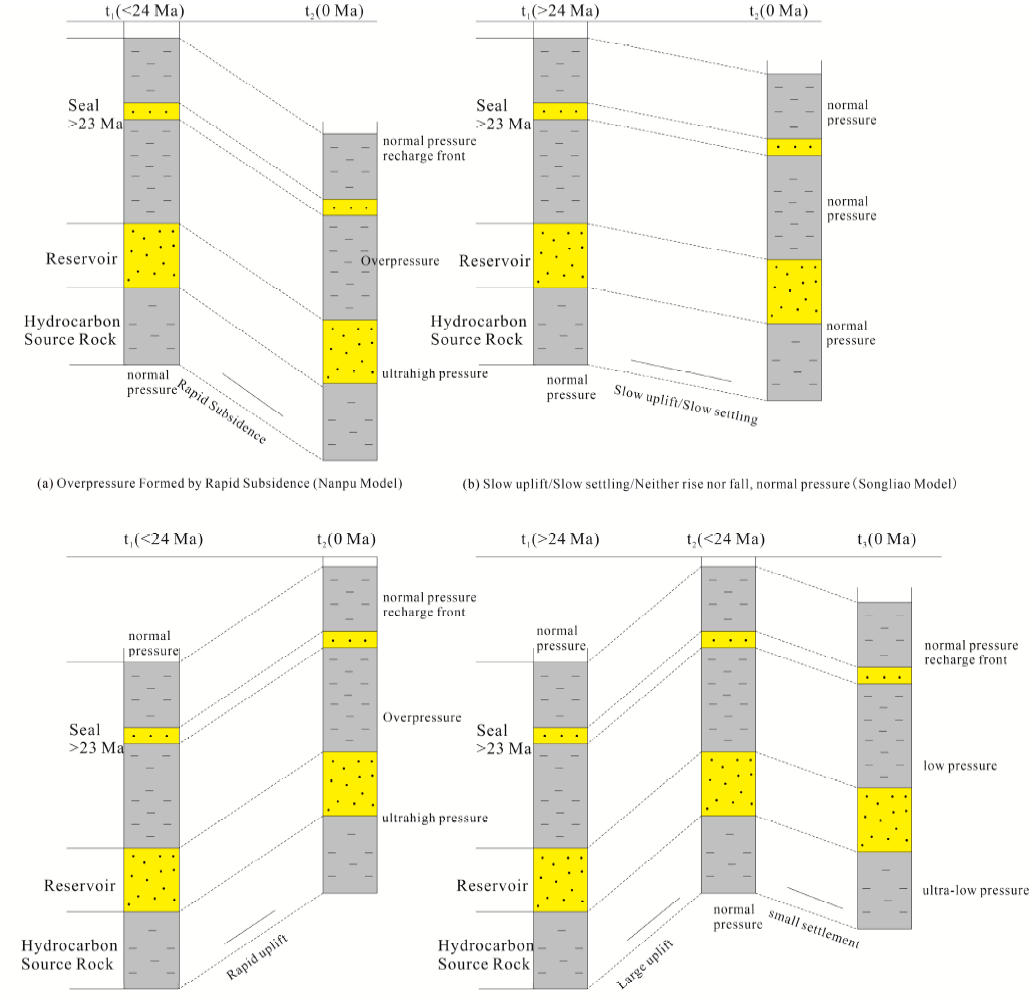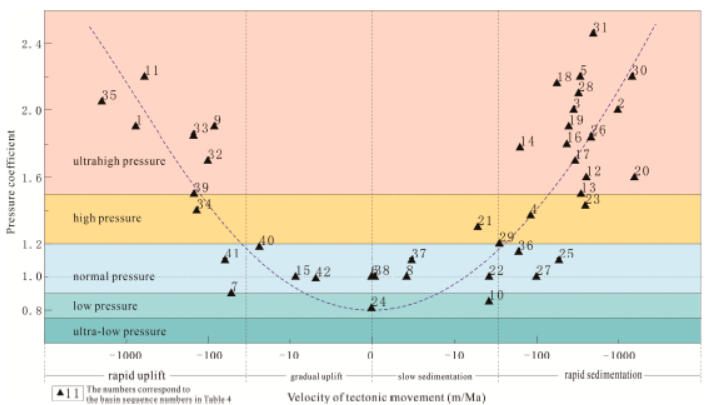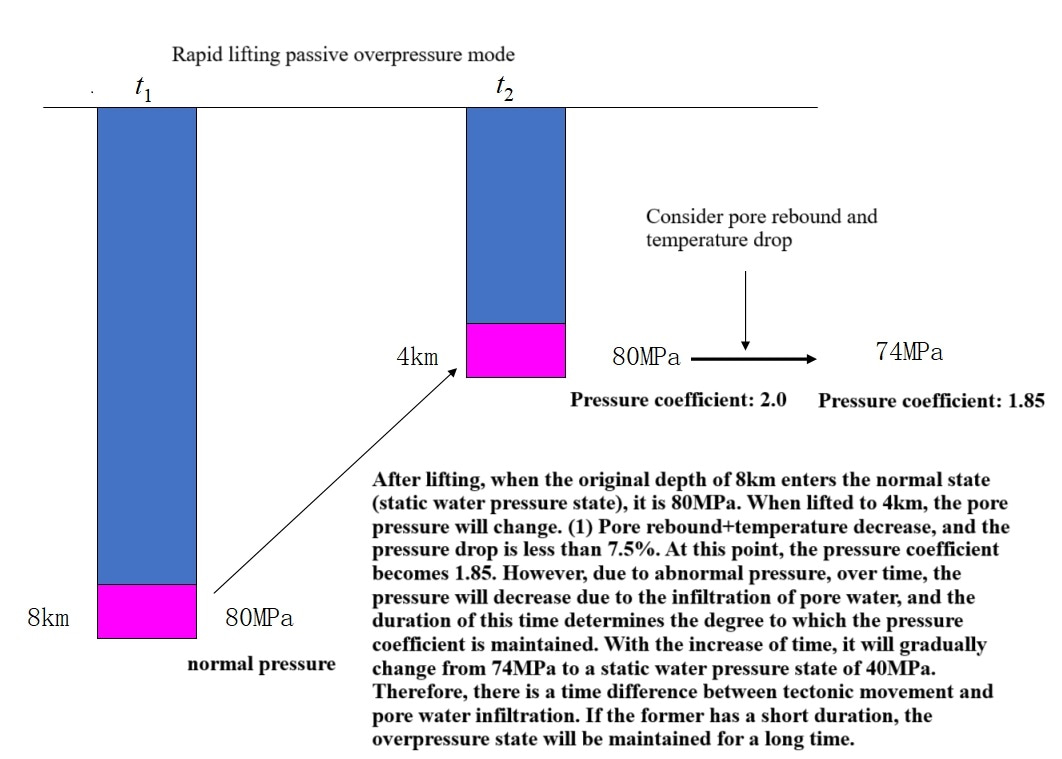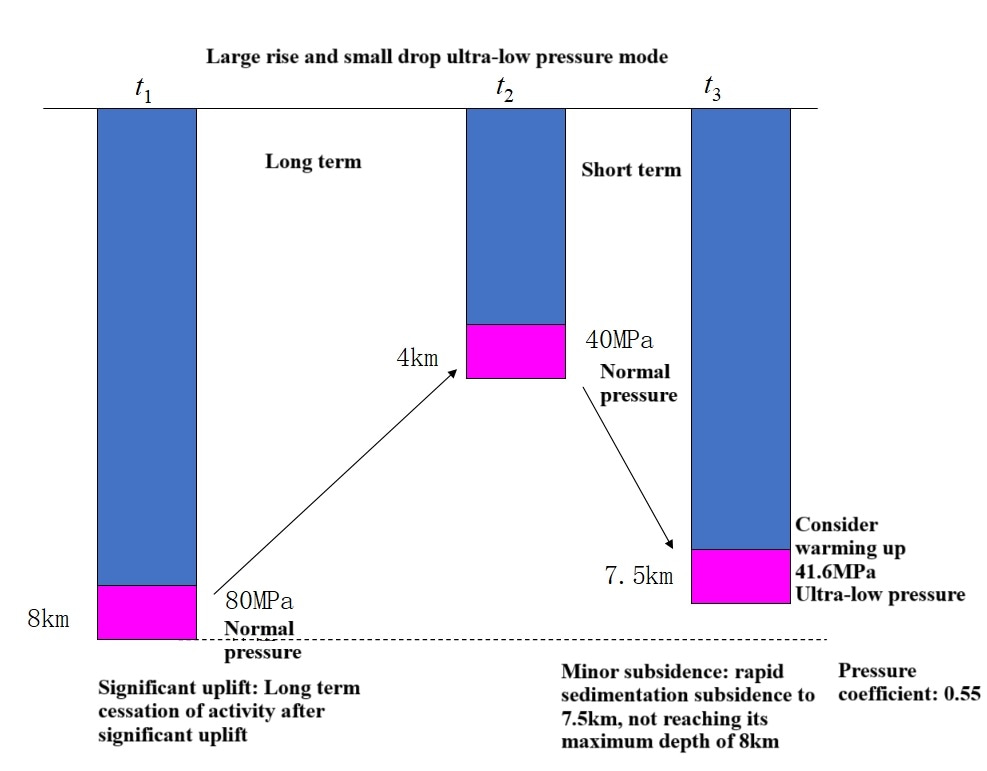New Insights into Overpressure Theory: The Relationship between the Time Difference of Formation Water Infiltration Rate, Tectonic Movement, and the Formation Pressure Coefficient
Published in Earth & Environment

Formation overpressure is a critical concept in geology, describing the deviation of pore water pressure from hydrostatic conditions within geological strata. This phenomenon can manifest as either subnormal pressure (lower than hydrostatic) or overpressure (higher than hydrostatic), collectively termed "abnormal formation pressure."
Multiple hypotheses have been proposed to explain the origins of abnormal formation pressure, with dominant mechanisms including undercompaction, hydrocarbon generation-induced overpressure, and tectonic compression-induced overpressure. However, the proliferation of competing theories has led to fragmentation in understanding:
1.Hypotheses proliferate like blind men describing an elephant: Proposed mechanisms range from tectonic compression and undercompaction to hydrocarbon generation-induced pressure, hydrothermal effects, episodic hydrocarbon expulsion, and overpressure-driven migration.
2.Each hypothesis addresses only a fragment of the puzzle: For instance, hydrocarbon generation-induced overpressure explains high-pressure regimes but fails to account for extreme low-pressure conditions. This piecemeal approach reveals inherent theoretical gaps.
Through years of in-depth research, we have proposed the critical concept of the time lag between geological fluid (primarily formation water permeation velocity) and tectonic movement velocity, which determines the formation pressure regime. This unified theoretical framework enables the interpretation or prediction of pressure coefficients.
----------------------------------
Please Cite: Mao Xiaoping, Li Shuxian, Chen Xiurong et al. 2024. The Relationship between the Time Difference of Formation Water Infiltration Rate, Tectonic Movement, and the Formation Pressure Coefficient. Applied Sciences. 14, 5615. https://doi.org/10.3390/app14135615
----------------------------------
This paper posits that overpressure develops when tectonic movement velocity exceeds formation water permeation velocity. Rapid recent sedimentation, subsidence, or uplift can all induce overpressure. Crucially, the temporal proximity is paramount—if Meso-Cenozoic tectonic activity ceases (i.e., prolonged post-tectonic stabilization), overpressure dissipates, transitioning to normal pressure conditions. Four modes are delineated (Fig. 1). Cross-plotting of global basin data underscores a positive correlation between tectonic movement velocity and pressure coefficients (Fig. 2). This unified framework explains both extreme overpressure and extreme underpressure. Abnormal pressures exclusively manifest in mesodiagenetic strata; early diagenetic strata, characterized by high porosity and permeability, cannot sustain pressure anomalies.
Mode 1: Rapid Sedimentation-Driven Active Overpressure (Nanpu Model)
Neogene, particularly Quaternary rapid subsidence, triggers active overpressure. Overpressure formation necessitates mesodiagenetic strata where pore fluid expulsion lags behind sedimentation rates. Examples include the Nanpu Oilfield and Baiyun Sag. Numerous basins on China’s continental margin exhibit active overpressure once sediment thickness exceeds ~5 km.

Figure 1 Four modes of formation pressure


Figure 2: Relationship between Construction Movement Rate and Overpressure.The numbers in the figure represent different basins or strata (only partial, please download the original text for details)
Mode 2: Rapid Uplift-Induced Passive Overpressure (Sichuan Model)
During recent rapid uplift events, such as Neogene-Quaternary exhumation, passive overpressure develops. Post-uplift, residual pore pressure persists in shallower strata, creating apparent overpressure when recalculated to new depths. For example, Well JY1 in the Sichuan Basin experienced rapid uplift, whereas Wells PY1 and LY1 (slow uplift) exhibit lower pressure coefficients. As illustrated in Fig. 3, pre-uplift strata at 8 km depth reached hydrostatic equilibrium (80 MPa pore pressure). Rapid exhumation to 4 km depth reduces pore pressure to ~74 MPa (due to pore rebound and temperature decrease), yielding a pressure coefficient of 1.85. However, subsequent pore fluid migration gradually dissipates this overpressure. The duration of this process determines pressure retention: rapid tectonic events (short time lag) preserve overpressure longer, while prolonged fluid equilibration reduces pressure coefficients toward hydrostatic values (e.g., 40 MPa). This temporal decoupling between tectonic uplift and fluid permeation explains persistent overpressure anomalies.

Figure 3 Formation mode of rapid uplift passive overpressure
Mode 3: Long-Term Tectonic Dormancy-Induced Normal Pressure (Songliao Model)
Prolonged tectonic quiescence during the Mesozoic or Cenozoic—marked by negligible uplift/subsidence or minimal vertical displacement—results in normal pressure regimes. Sufficient time allows pore fluids to fully dissipate abnormal pressures, establishing hydrostatic equilibrium. For example, the Songliao Basin has remained largely inactive since the Cretaceous (K2), as has the Erlian Basin, which has experienced only gradual uplift post-K2.
Mode 4: Large-Scale Uplift followed by Minor Subsidence-Induced Extreme Underpressure (Sulige Model)
Prolonged substantial uplift to significant elevations, followed by rapid minor subsidence that does not reach prior maximum burial depths, generates extreme underpressure. Extended residence at high elevations fully dissipates abnormal pore pressures, maintaining hydrostatic conditions. Subsequent minor subsidence halts diagenesis, preserving original porosity and pressure. When recalculated to new depths, this static pressure regime manifests as extreme underpressure because insufficient time exists for fluid re-equilibration or pore water replenishment. Fig. 4 illustrates this mechanism: rapid descent to shallow depths without achieving maximum burial depth traps underpressured conditions.

Figure 4: Large Rise and Small Fall Mode
Fig. 2 illustrates the correlation between recent tectonic movement rates (positive for subsidence, negative for uplift) and pressure coefficients across multiple global basins. A consistent positive relationship is observed: faster recent tectonic activity (whether uplift or subsidence) correlates with higher pressure coefficients. No exceptions have been identified to date.
Mao Xiaoping
School of Energy Resources, China University of Geosciences (Beijing)
TEL &Wechat: 13911360200
June 22, 2025

Please sign in or register for FREE
If you are a registered user on Research Communities by Springer Nature, please sign in